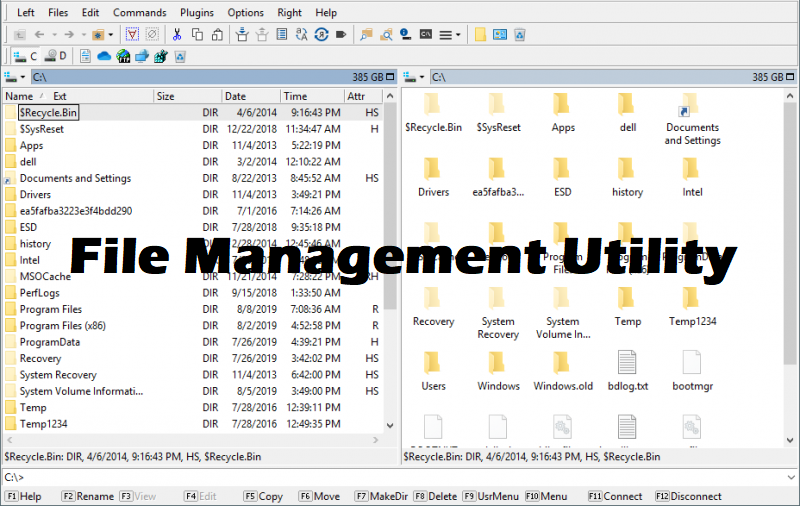One Example Of A File Management Utility Is Windows

What Is File Management System?
A file management system is used for file maintenance (or management) operations. It is a type of software that manages data files in a computer system.
A file management system has limited capabilities and is designed to manage individual or group files, such as special office documents and records. It may display report details, like owner, creation date, state of completion, and similar features useful in an office environment.
A file management system is also known as a file manager.
Windows Explorer: Default File Management Tool
Windows Explorer is a file utility program included in windows explorer with the name file explorer. a file management system which is the default management tool. It allows the user to view, access, manage, or delete files on your system using a simple window. Functions and features of windows explore are as follows:
Windows File Manager (the WINFILE.EXE utility) was included with Windows versions prior to Windows 95 and Windows NT 4.0, but is no longer in service. The file management function in Windows 95/NT 4.0 and later versions were replaced with the Windows Explorer interface accessible through the My Computer icon.
Other Cloud-Based File Management Utility
One Example Of A File Management Utility Is Windows
- eFileCabinet
- Microsoft OneDrive
- Dropbox
- Apple iCloud
- Google Drive
File Management System (File Manager)
The file management system is commonly called the file manager. In this text, we will
primarily use the term ‘‘file manager’’, so please remember we are talking about a software
program, not a person! The file manager acts as a transparent interface between the user’s
the logical view of the file system and the computer’s physical reality of disk sectors, tracks, and
clusters, tape blocks, and other I/O vagaries. It provides a consistent set of commands and
a consistent view of files to the user regardless of the file type, file characteristics, choice of
the physical device, or physical storage requirements. It translates those commands to a form
appropriate for the device and carries out the required operation. To do so, it maintains
directory structures for each device. These, too, are presented in a logical form to the user
and to the user’s programs.
File Management Common Tasks
- It can access and manage files of different software namely, excel, word, etc
- Helps to browse files on your hard drive and also, external storage like USB.
- It helps to manage files in a hierarchy in folders.
- Moreover, it also helps to drag and move files among folders.
The default file management tool in mac devices is Finder. Although Windows Explorer and Finder have many features, they are not enough for business purposes.
Functions Of The File Management Utility
The functions of a file management system are as follows:
- Store, arrange or accessing files on a disk or other storage locations.
- Creating new files.
- Displaying the old files.
- Adding and editing the data in files.
- Moving files from one location to another.
- Sorting files according to the given criteria. For example, file size, file location, modified date, creation date, etc.
What Is The Purpose Of Windows Explorer
If you’re using Microsoft Windows, it’s possible to edit files in programs such as Microsoft Word or Excel, save them and open them again using that particular piece of software.
If want to browse through your hard drive or external storage such as USB memory sticks for particular files. You may also want to reorganize your files into new hierarchies of folders so that you can easily find them. For example, if you run a small business, you might organize files initially by the client and then create a second layer of folders organizing them by year or month when the folders start to be crowded with files.





